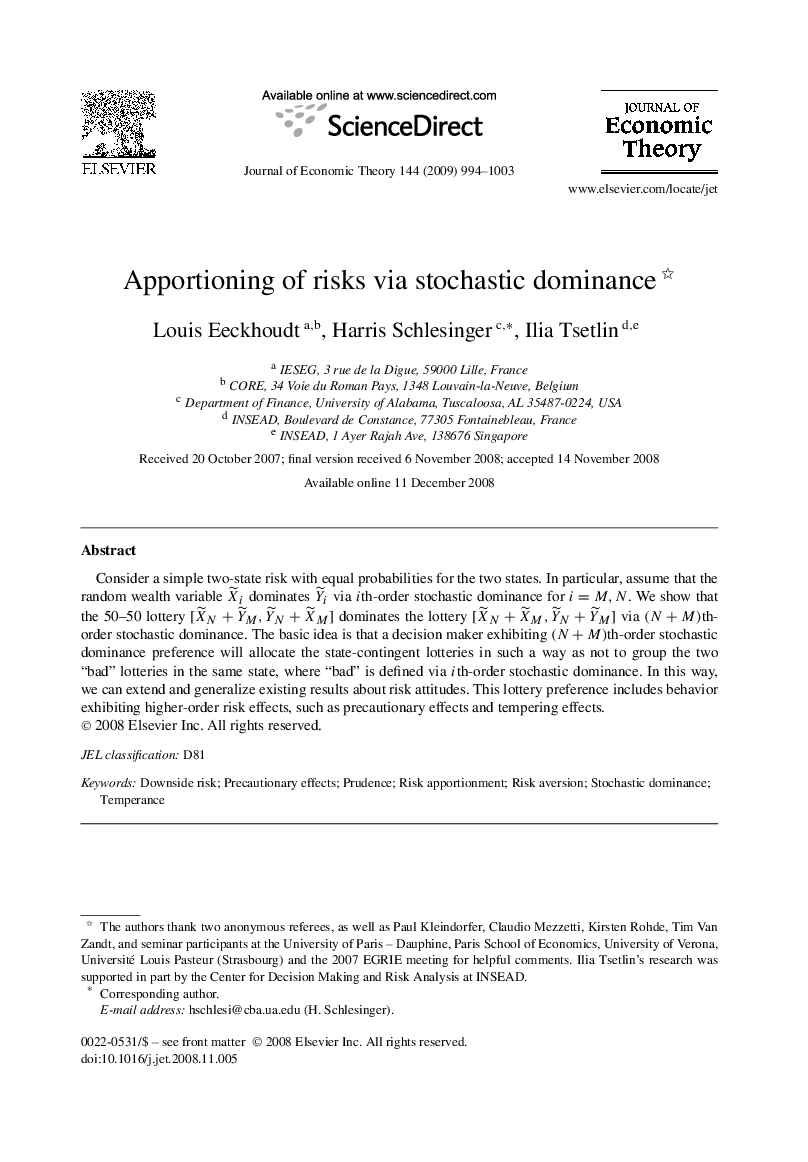| کد مقاله | کد نشریه | سال انتشار | مقاله انگلیسی | نسخه تمام متن |
|---|---|---|---|---|
| 957317 | 928522 | 2009 | 10 صفحه PDF | دانلود رایگان |

Consider a simple two-state risk with equal probabilities for the two states. In particular, assume that the random wealth variable X˜i dominates Y˜i via i th-order stochastic dominance for i=M,Ni=M,N. We show that the 50–50 lottery [X˜N+Y˜M,Y˜N+X˜M] dominates the lottery [X˜N+X˜M,Y˜N+Y˜M] via (N+M)(N+M)th-order stochastic dominance. The basic idea is that a decision maker exhibiting (N+M)(N+M)th-order stochastic dominance preference will allocate the state-contingent lotteries in such a way as not to group the two “bad” lotteries in the same state, where “bad” is defined via ith-order stochastic dominance. In this way, we can extend and generalize existing results about risk attitudes. This lottery preference includes behavior exhibiting higher-order risk effects, such as precautionary effects and tempering effects.
Journal: Journal of Economic Theory - Volume 144, Issue 3, May 2009, Pages 994–1003